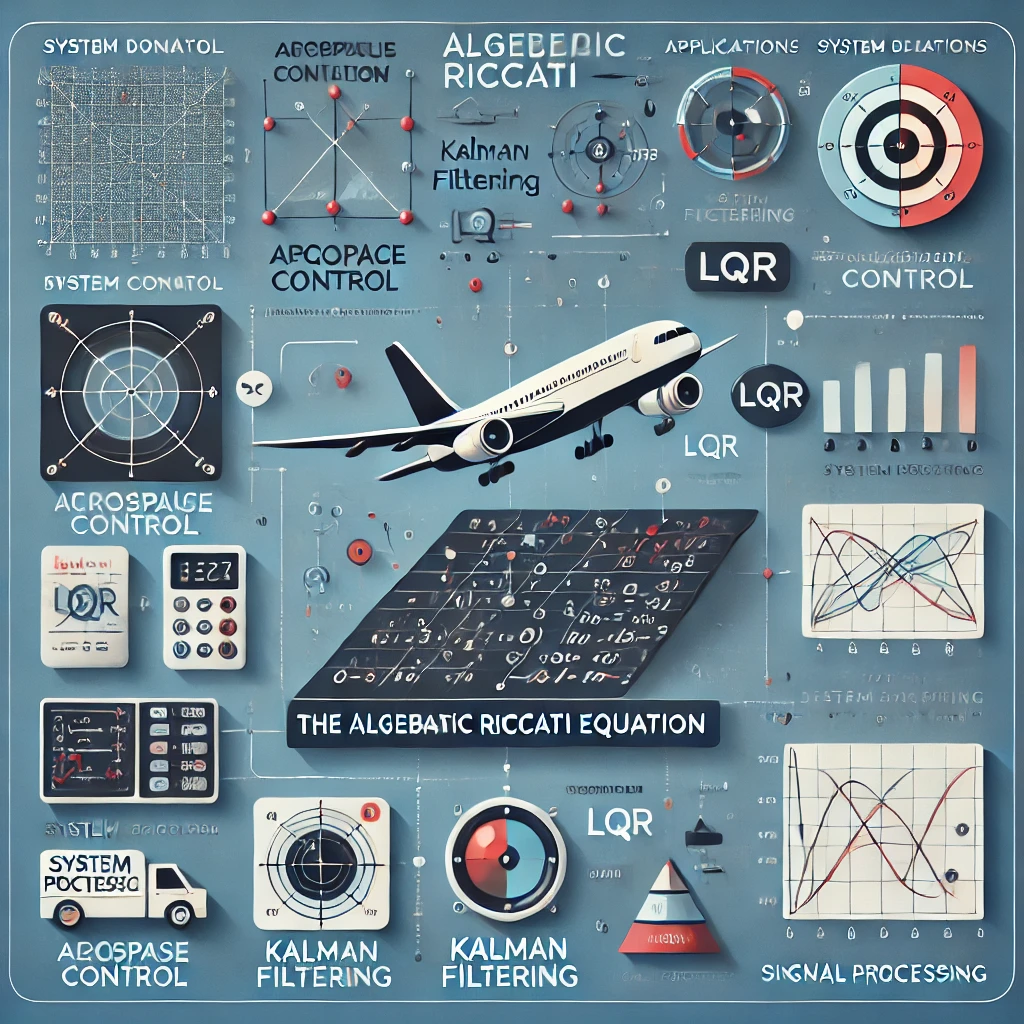Algebraic Riccati Equation : A Deep Dive into Applications and Solutions
The Algebraic Riccati Equation (ARE) is a fundamental concept in control theory, optimization, and applied mathematics. It plays a crucial role in designing systems, optimizing performance, and solving engineering problems. In this post, we’ll explore the definition, applications, solution techniques, and real-world examples of the Algebraic Riccati Equation. 🌟
What is the Algebraic Riccati Equation? 💡
The Algebraic Riccati Equation is a type of matrix equation that arises in control and estimation problems. It is typically expressed as:
Where:
- , , , and : Given matrices derived from the system model.
- : The unknown matrix to be solved.
The equation is named after Jacopo Riccati, who first studied a similar form in scalar cases. The ARE is widely used in linear quadratic regulator (LQR) problems and Kalman filtering.
Key Features of the Algebraic Riccati Equation ✨
- Matrix Nature: Unlike scalar equations, the ARE involves matrices, making its solutions more complex and computationally demanding.
- Symmetry: The solution matrix is usually symmetric and positive semi-definite.
- Nonlinear Terms: The term introduces nonlinearity, adding to its computational challenges.
Applications of the Algebraic Riccati Equation 🌍
1. Linear Quadratic Regulator (LQR) ⚙️
The ARE is central to designing the LQR, which optimizes system performance by minimizing a quadratic cost function:
Where:
- : State vector
- : Control input
By solving the ARE, the optimal feedback gain matrix is computed as:
2. Kalman Filter 🍊
In state estimation problems, the ARE helps compute the optimal error covariance matrix. This is essential for designing filters that estimate system states from noisy measurements.
3. Signal Processing 🔊
The ARE is applied in Wiener filtering and other techniques for minimizing noise and enhancing signal quality.
4. Aerospace Engineering 🚁
In aerospace systems, the ARE is used to design robust autopilots and navigation systems, ensuring stability and optimal performance.
5. Economic Modeling 💰
Economists use the ARE to model dynamic systems like optimal investment strategies and resource allocation.
Solving the Algebraic Riccati Equation 🔧
1. Analytical Methods
Analytical solutions are rare but possible for simple systems. These involve deriving explicit expressions for based on system parameters.
2. Numerical Algorithms
For most practical cases, numerical methods are used:
- Eigenvalue Decomposition: Solving the ARE by analyzing the eigenvalues of the Hamiltonian matrix.
- Schur Decomposition: A numerically stable approach that involves triangularizing the Hamiltonian matrix.
- Iterative Methods: Algorithms like the Newton-Raphson method or Lyapunov iterations.
3. Software Tools
Modern computational tools like MATLAB, SciPy (Python), and control-specific libraries provide efficient solvers for the ARE.
Challenges and Limitations 🚧
- Computational Cost: Solving large-scale AREs can be computationally intensive.
- Stability Requirements: The system matrices must meet specific conditions for the ARE to have a stable solution.
- Complexity in Real-Time Systems: Real-time applications may struggle with the computational demands of solving the ARE.
Real-World Example: Aerospace Control 🌌
Consider an autopilot system for an aircraft. The goal is to maintain stability and optimize fuel efficiency while reacting to disturbances like wind gusts. The ARE helps compute the feedback gain matrix , enabling the autopilot to adjust control surfaces effectively.
Author’s Thoughts and Experiences 🌟
My journey with the Algebraic Riccati Equation began during a control systems class. Initially, the dense matrices and complex derivations were intimidating. However, working on practical projects like designing an LQR for a drone opened my eyes to its immense value. The ARE is not just a mathematical curiosity but a tool that bridges theory and application.
For anyone exploring control systems or optimization, the Algebraic Riccati Equation is a cornerstone concept. Its challenges are outweighed by its utility, making it a must-learn for engineers and mathematicians alike.
This post is designed to make the ARE more accessible. If you’ve faced challenges with it or have unique applications to share, let’s discuss in the comments! 🌟

